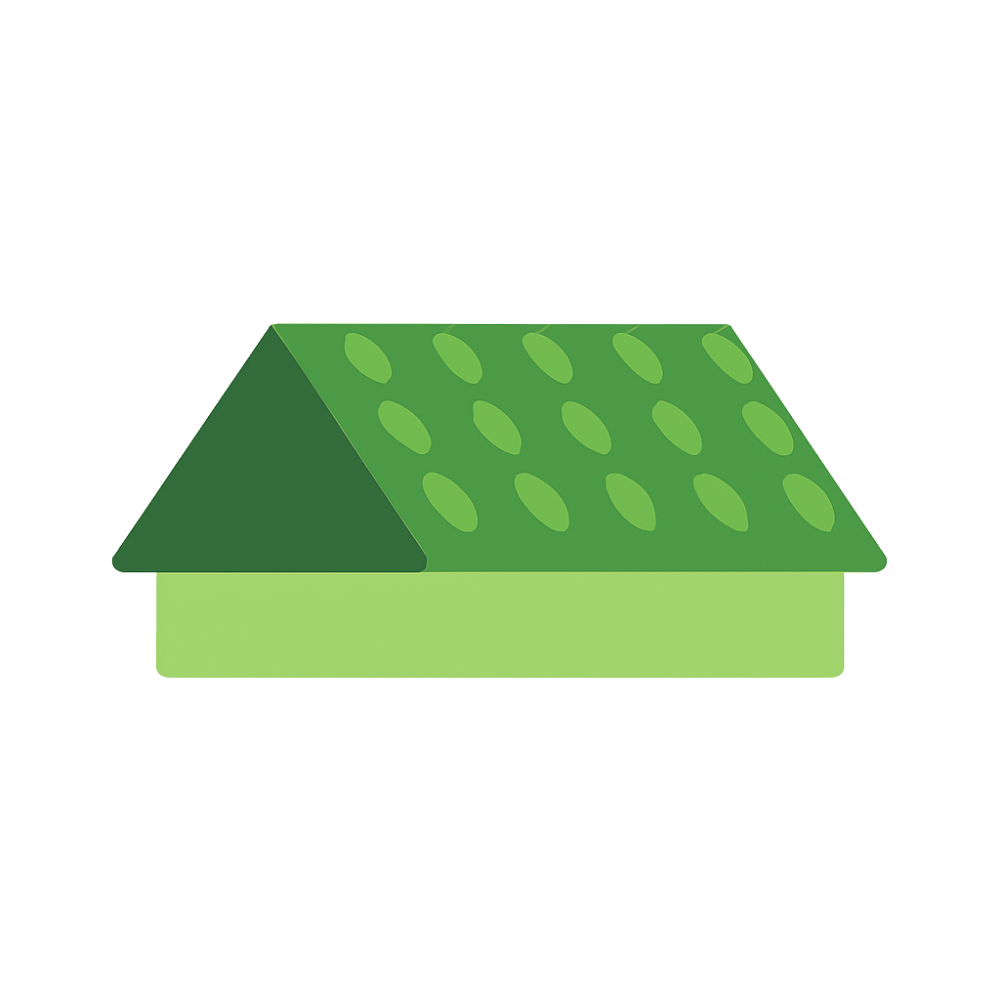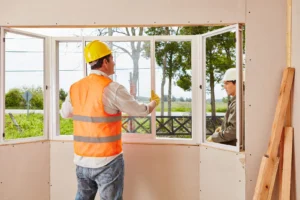Table of Contents
- The Crucial Role of Gutters in Home Protection
- Exploring Gutter Types: Materials and Styles
- Selecting the Right Gutter System for Your Home
- Step-by-Step Guide to Gutter Installation
- Enhancing Gutters with Accessories
- Routine Gutter Maintenance Tips
- Addressing Common Gutter Issues
- Creative Gutter Utilization Ideas
- Making Informed Decisions: DIY vs. Professional Installation
The Crucial Role of Gutters in Home Protection
Gutters are a vital yet often underestimated part of your home's defense system. Their main job is to redirect rainwater from the roof away from the foundation, preventing a host of expensive and damaging issues.
1. Shielding Your Foundation
Without gutters, rainwater can pool around your home's base, leading to cracks, shifting, or basement flooding. Gutters keep water moving safely away, protecting your foundation and structural stability.
2. Preventing Soil Erosion and Landscaping Damage
Runoff from the roof can erode soil, drown plants, and destroy mulch beds. Gutters channel water through controlled paths, preserving your yard and curb appeal.
3. Protecting Siding and Exterior Walls
Splashing rain can stain siding, cause rot, and promote mold growth. Gutters reduce splashback, keeping your exterior cleaner and drier.
4. Reducing Basement Moisture and Mold
Improper drainage increases the risk of leaks and mold growth in basements. Gutters help keep the lower level of your home dry and healthy.
5. Preserving Roof Edges and Fascia
Overflow or trapped water can rot fascia boards and damage roof decking. Functioning gutters extend the life of your roof and trim.
Even a simple gutter system plays a major role in safeguarding your home from water-related damage. If your gutters are aging or clogged, it's time to act - before nature does.


Exploring Gutter Types: Materials and Styles
Gutters do more than move water - they're an essential part of your home's exterior design and defense. Choosing the right material and style ensures long-lasting performance and curb appeal.
Common Gutter Materials
- Vinyl
Affordable, rust-resistant, and easy to install - ideal for DIYers in mild climates. Less durable in extreme cold. - Aluminum
Lightweight, rustproof, and available in seamless options. A solid balance of price, performance, and style versatility. - Galvanized Steel
Strong and impact-resistant, great for harsh weather. Needs regular maintenance to avoid rust. - Copper
High-end, long-lasting, and visually striking. Ideal for historic or luxury homes. Requires a larger upfront investment.
Gutter Profiles
- K-Style
Modern and decorative, these gutters handle more water and blend well with contemporary architecture.
- K-Style
- Half-Round
Classic, smooth, and ideal for traditional or historic homes. Easier to clean but lower in capacity.
- Half-Round
Choosing What's Right
Your decision should factor in climate, home design, maintenance needs, and budget. The right gutter system won't just perform well-it'll elevate your home's look and value.


Frequently Asked Questions
Why are gutters important for my home? +
Selecting the Right Gutter System for Your Home
Choosing the right gutter system requires a balance of practicality, performance, and visual appeal. Start by considering the size and pitch of your roof - larger or steeper roofs require higher-capacity gutters to handle increased water flow. Climate is another key factor: if you live in an area with heavy rainfall or snowfall, you'll need a durable material like aluminum or steel that won't easily bend or rust. For those on a tighter budget, vinyl gutters are lightweight, affordable, and easy to install, though they may not hold up as well in extreme weather. On the other end of the spectrum, copper gutters offer unmatched longevity and elegance, developing a beautiful patina over time - ideal for historic or high-end homes. Ultimately, the best gutter system is one that suits your home's needs, your local weather conditions, and your long-term maintenance goals.


Frequently Asked Questions
What's the best material for gutters? +
Step-by-Step Guide to Gutter Installation
Installing gutters correctly is essential to ensure they perform effectively and last for years. The process starts with accurately measuring the roofline to determine how much material is needed. It's also crucial to calculate a slight downward slope - typically about ¼ inch for every 10 feet - to ensure proper water flow toward the downspouts. Once the layout is planned, brackets are mounted securely along the fascia to support the gutter runs. Gutter sections are then cut to fit and joined together, either with connectors or by welding in seamless systems. Finally, the system is fastened into place and sealed at joints to prevent leaks. A properly installed gutter system not only improves drainage but also reduces the risk of water damage to your home's foundation, siding, and landscaping.


Frequently Asked Questions
How often should I clean my gutters? +
What are gutter guards, and are they worth it? +
Enhancing Gutters with Accessories
To further improve the functionality and aesthetics of your gutter system, various accessories can make a big difference. Gutter guards are a popular addition, designed to prevent leaves, twigs, and other debris from clogging your gutters, which reduces maintenance needs and ensures smooth water flow. For homes with expansive lawns or sensitive foundations, downspout extensions are a great way to direct water even further away from the house, minimizing the risk of soil erosion and basement flooding. On the decorative side, rain chains can replace traditional downspouts, creating a beautiful water feature as rainwater cascades down, adding a touch of elegance to your outdoor space. These accessories not only enhance gutter performance but also improve your home's overall curb appeal.


Routine Gutter Maintenance Tips
Regular gutter maintenance is key to preventing clogs and water damage. Ideally, gutters should be cleaned at least twice a year - once in the spring to clear out debris from winter, and again in the fall to remove leaves and twigs before the winter weather sets in. While cleaning, it's important to also inspect for signs of damage, such as leaks, rust, or sagging. These issues can lead to more serious water damage if left unchecked. When cleaning, always use a sturdy ladder for safety, wear gloves to protect your hands from sharp edges, and use a garden hose to flush out any remaining debris after removing larger clogs. Regular upkeep ensures that your gutters continue to function properly and protect your home from water-related damage.


Frequently Asked Questions
How long do gutters typically last? +
• Aluminum & Steel: 20-25 years
• Vinyl: 10-15 years
• Copper: 50+ years
Lifespan depends on installation quality and maintenance.
Can I install gutters myself, or should I hire a pro? +
What size gutters do I need? +
Addressing Common Gutter Issues
Even the best gutters can encounter issues over time, but catching problems early can prevent costly damage. One of the most common issues is clogging, which can cause water to overflow and potentially damage your roof, siding, and foundation. Regular cleaning can help prevent this, but if clogs persist, it may be worth installing gutter guards. Another frequent issue is sagging or misalignment; this can occur when gutters are weighed down by debris or have been poorly installed. Sagging gutters can lead to improper water flow, causing damage to your home. Tightening or replacing brackets and ensuring the correct slope can resolve this. Leaks are another concern, often caused by worn-out seals or joints. These can be fixed by resealing or replacing damaged sections. Lastly, if you notice rust or corrosion, it could indicate that your gutters are made from a material that doesn't hold up well over time. In such cases, consider replacing sections with a more durable material like aluminum or copper. Addressing these common issues promptly will keep your gutters working effectively and protect your home from water damage.
Creative Gutter Utilization Ideas
Gutters don't just serve the practical purpose of directing water away from your home; they can also be repurposed creatively to add charm or utility to your yard. One popular idea is to turn old gutters into planters. By attaching them to a wall or fence, you can create a beautiful and functional vertical garden, perfect for growing herbs, flowers, or even small vegetables. Another clever use is to set up a rainwater harvesting system. Simply add a rain barrel at the base of your downspout to collect and store rainwater, which can be used to water your garden or wash your car. For a more decorative touch, consider using gutters to create rain chains or water features. These visually appealing alternatives to traditional downspouts add a calming, aesthetic element to your garden, while still serving their original function. By repurposing gutters, you not only recycle an old material but also enhance your outdoor space in unique ways.
Frequently Asked Questions
Why is water overflowing from my gutters? +
• Clogged gutters
• Improper slope
• Inadequate downspouts
Check and clean your gutters first, and then assess the slope and capacity.
How can I tell if my gutters need replacement? +
• Frequent clogs or leaks
• Sagging sections
• Rust or cracks
• Water stains on siding or pooling near the foundation
What's the cost of new gutter installation? +


Making Informed Decisions: DIY vs. Professional Installation
When it comes to gutter installation, homeowners often face the decision of whether to tackle the project themselves or hire professionals. DIY installation can be a more cost-effective option, especially if you have basic handyman skills and are working with a straightforward roofline. It allows you to save on labor costs, and there are many online resources to guide you through the process. However, it's important to be realistic about your skill level and the complexity of the project. For multi-story homes or roofs with intricate designs, professional installation is often the best choice. Professionals have the experience, tools, and safety equipment necessary to handle the challenges of complex rooflines or difficult-to-reach areas. They also ensure that your gutters are properly aligned and securely installed, minimizing the risk of water damage down the road. When deciding, consider both the scope of the project and your comfort level with DIY work to determine the best solution for your home.































